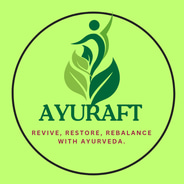Ayurvedic medicine, a traditional system of healing from India, offers various treatments for skin diseases. Ayurvedic treatments aim to balance the body's three doshas (Vata, Pitta, and Kapha), which are believed to be the underlying causes of many health issues, including skin conditions. Here are some common skin diseases and their Ayurvedic treatments:
1. Acne (Pimples)
Dietary Adjustments: Reduce intake of spicy, oily, and sugary foods. Incorporate cooling foods like cucumbers and yogurt.
Herbs and Supplements: Neem, turmeric, and licorice root are commonly used. Neem has antibacterial properties, turmeric is anti-inflammatory, and licorice root can help with skin healing.
Topical Treatments: Apply a paste made from turmeric and sandalwood, or use a neem oil-based product.
2. Eczema (Atopic Dermatitis)
Dietary Adjustments: Avoid allergens and inflammatory foods like dairy, gluten, and processed sugars. Include anti-inflammatory foods such as flaxseeds and leafy greens.
Herbs and Supplements: Triphala, an Ayurvedic formulation, is often used for its detoxifying properties. Aloe vera is also beneficial for soothing the skin.
Topical Treatments: Use coconut oil or ghee to moisturize the skin. Aloe vera gel can also provide relief.
3. Psoriasis
Dietary Adjustments: Avoid foods that may trigger inflammation, such as nightshades and processed foods. Include omega-3 rich foods like chia seeds and walnuts.
Herbs and Supplements: Ashwagandha and Guduchi (Tinospora cordifolia) are used to balance the immune system and reduce inflammation.
Topical Treatments: A mixture of neem oil and turmeric or a paste of sandalwood and turmeric can be applied to affected areas.
4. Vitiligo
Dietary Adjustments: Increase intake of foods rich in vitamins and minerals, particularly those containing Vitamin B12 and folic acid.
Herbs and Supplements: Psoralea corylifolia (also known as Bakuchi) is used in Ayurvedic medicine to promote pigment production.
Topical Treatments: Application of a paste made from Psoralea seeds mixed with other ingredients like mustard oil can be beneficial.
5. Hives (Urticaria)
Dietary Adjustments: Identify and avoid potential allergens. Incorporate cooling foods and herbs.
Herbs and Supplements: Turmeric, neem, and coriander can help reduce inflammation and allergic reactions.
Topical Treatments: Apply a cool compress or use aloe vera gel to soothe the skin.
6. Rosacea
Dietary Adjustments: Avoid triggers such as spicy foods, alcohol, and hot beverages. Eat cooling foods like cucumber and mint.
Herbs and Supplements: Licorice root and turmeric are often recommended for their anti-inflammatory properties.
Topical Treatments: Use a mixture of rose water and aloe vera gel to calm and hydrate the skin.
General Ayurvedic Principles for Skin Health
Hydration: Drink plenty of water and herbal teas to keep the body hydrated and flush out toxins.
Balanced Diet: Focus on a diet that balances the doshas. For skin health, a diet rich in fresh fruits, vegetables, and whole grains is generally recommended.
Lifestyle Practices: Regular exercise, stress management, and adequate sleep are essential for overall health and can positively impact skin conditions.
Important Notes
Consultation: Always consult with a qualified Ayurvedic practitioner or healthcare provider before starting any new treatment, especially if you have underlying health conditions or are taking other medications.
Patch Testing: When using topical treatments, do a patch test first to ensure there is no allergic reaction.
Ayurvedic treatments can be complementary to conventional medicine and should be used with professional guidance to ensure the best outcomes for skin health
ayuraft.com© 2024. All Rights Reserved.
DISCLAMER: All information provided on this website is not intended to diagnose,prevent treat or cure any disease.Always consult a licensed medical professional for your health condition. READ MORE..
By using,readig or accessing any page on this website,you agree that you have read, understood and will abide by the terms and conditions of USE,DISCLAMER and PRIVACY POLICY.


